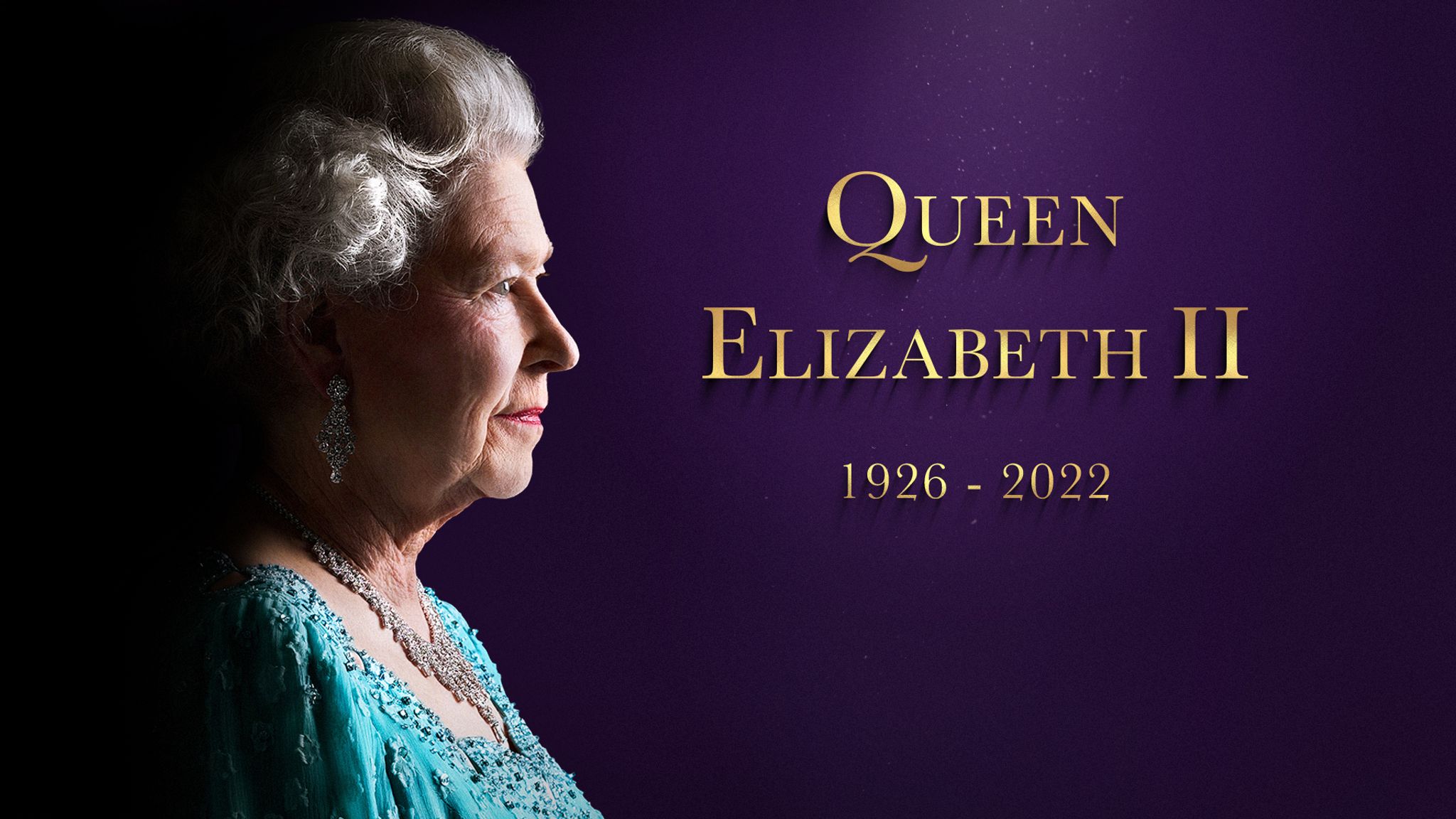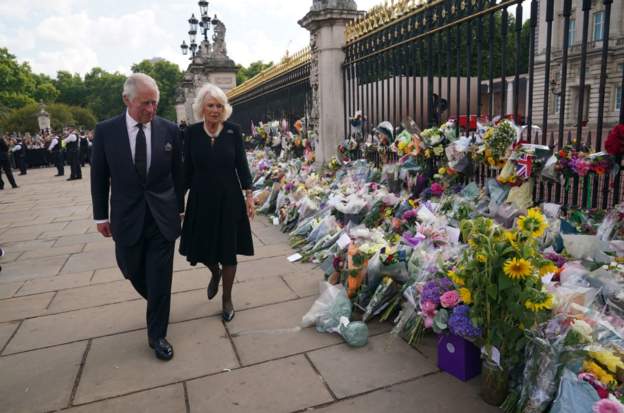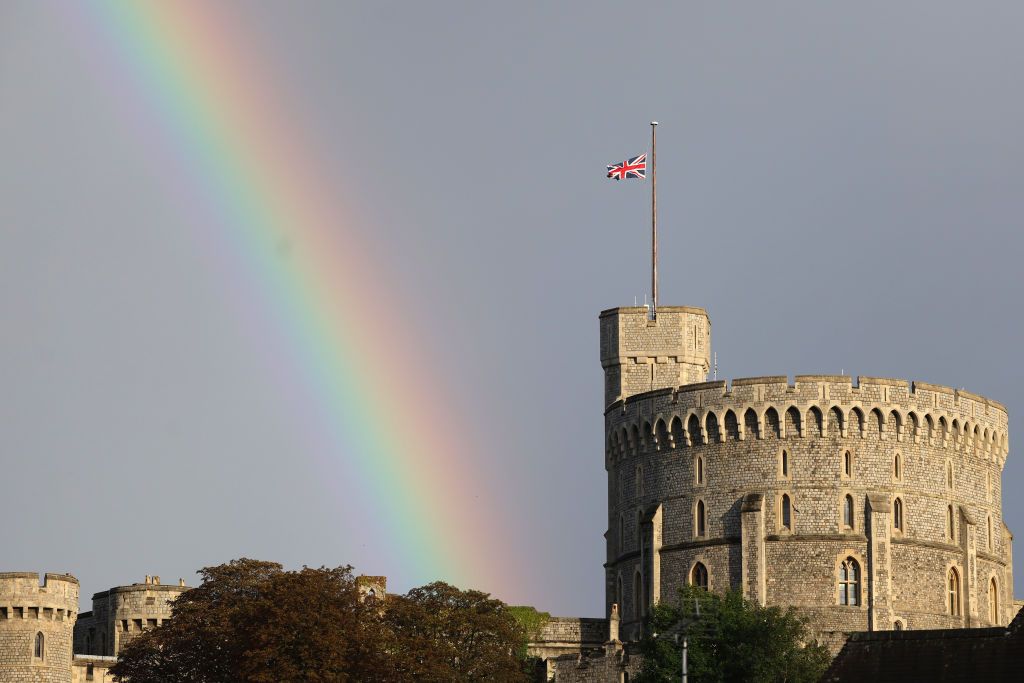Queen Elizabeth II, like her predecessor, did not pass her childhood in any certain expectation of the Crown. But already we know her well, and we understand why her gifts, and those of her husband, the Duke of Edinburgh, have stirred the only part of the Commonwealth she has yet been able to visit. She has already been acclaimed as Queen of Canada.
We make our claim too, and others will come forward also, and tomorrow the proclamation of her sovereignty will command the loyalty of her native land and of all other parts of the British Commonwealth and Empire. I, whose youth was passed in the august, unchallenged and tranquil glories of the Victorian era, may well feel a thrill in invoking once more the prayer and the anthem, “God save the Queen
‘For Valour’ – Winston Churchill’s eulogy of King George VI, 1952
As this is a blog that focuses on history, it’s not often that I get to comment on current events and never before on events that are unfolding right now. As I type this, bells are tolling across the country, led by those at St. Paul’s Cathedral, and the UK Parliament is observing a minute’s silence in memory of the queen. Meanwhile, King Charles III has just arrived at Aberdeen airport as he travels with his wife and queen Consort, Camilla, from Balmoral to London. In the time it took me to actually write this, he has since arrived in London and greeted the people queuing to leave tributes outside Buckingham Palace. Events are passing quickly.
For the UK, a period of National Mourning has begun which has left many in the world puzzled as to what that actually entails. Even more surprising for some, was the speed with which the queen’s son, Charles became King Charles III. It was, in fact, immediate. Although the period of mourning will be observed in many countries around the world, mostly those that fall under the banner of the Commonwealth, this post is concerned with what’s happening in the UK, simply because that’s where I’m writing.
The Conventions of Dying
Despite her great age, there was undeniably a sense of shock when Queen Elizabeth II actually passed away. But, however unexpected it might have been, what happens next and indeed, what has already happened, is dictated by strict conventions. These conventions have been laid down for decades if not centuries and will have been extensively rehearsed by all the organisations involved. What happens to the queen now falls under a plan known as Operation London Bridge which will lay down exactly when and where certain events have to happen, culminating in the queen’s funeral. Because the queen died in Scotland, the government and palace are also undertaking Operation Unicorn which includes the queen lying in rest in Scotland, and transportation to London where the funeral will be held and where, eventually, she will be buried.
The announcement of the queen’s death came at 18:30 when, in accordance with tradition, a notice was posted on the gates of the queen’s residences. In the seventy years since the last time we had an announcement of this kind, the world is almost unrecognisable and the traditional notice was accompanied by official announcements on social media.
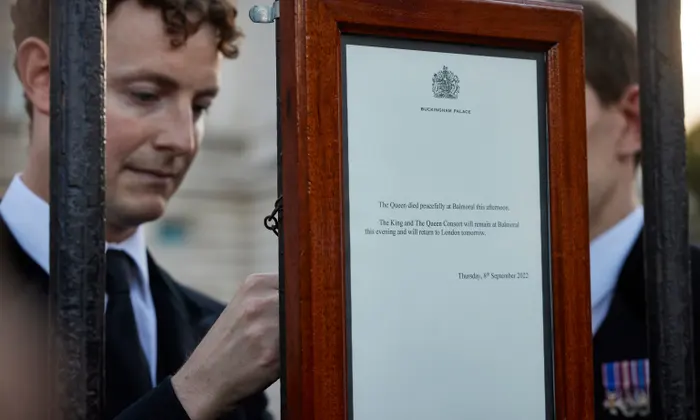
The shock of the announcement was tempered by the expectation that it was coming. Earlier in the day, Buckingham Palace, which has made a specific point of keeping the queen’s health a private matter, made a statement that her doctors were concerned for her health, and that she was resting comfortably at Balmoral. Her immediate family were called to her side, and the majority of British media outlets suspended their programming to follow developing events.
The Prime Minister, Elizabeth Truss, who became Prime Minister only a day and a half earlier, was notified that the queen had died at 16:30. Half an hour later Prince Andrew, Prince Edward and Countess Sophie, and Prince William, touched down in Aberdeen and started the journey to Balmoral. Prince Charles and Princess Anne were already present having been called immediately, and it’s thought that the two of them might have been present when the queen passed.
Flags were lowered to half-mast around the country, starting with Buckingham Palace, and the period of National Mourning officially began.
What does National Mourning mean?
Although the queen died on Thursday 8th September, the lateness of the hour meant that the first day of mourning was the following day, Friday 9th. The government has yet to confirm how long mourning will last but it’s expected to be around twelve days, ending the day after the queen’s funeral. The intent is that during this period the people of the United Kingdom will pause and reflect on the queen’s long reign.
National life is now on hold. Television schedules will be cleared and occupied by memorial programs, coverage of memorial activities and tributes, and placing an inordinate amount of criticism on Prince Harry and Meghan. No, really, the assaults have already begun. We can expect even more ire directed at Harry and Meghan at the expense of Prince Andrew who, according to the media, had nothing more than some inconvenient legal troubles some years ago. Even in these darkest hours of sadness, let us not forget that the real problem in the Royal Family has been the Sussexes moving to America, and not the Prince who partook in human trafficking.
Flags on all public buildings will have been lowered to half-mast, where they will remain, with the exception of the royal standard when the new King takes up residence in Buckingham Palace. Parliament is sitting to hear tributes and will do so until ten pm on the first and second days of mourning, taking breaks for the various ceremonies that surround the installation of a new monarch.
Most sporting events expected to take place over the weekend have been cancelled, as have cultural events such as the Proms. Incidentally, strike action that was planned has also been cancelled out of respect for the queen. Many businesses will have closed for the first day and may remain closed for the weekend, reopening in the interim, and closing again for the day of the funeral.
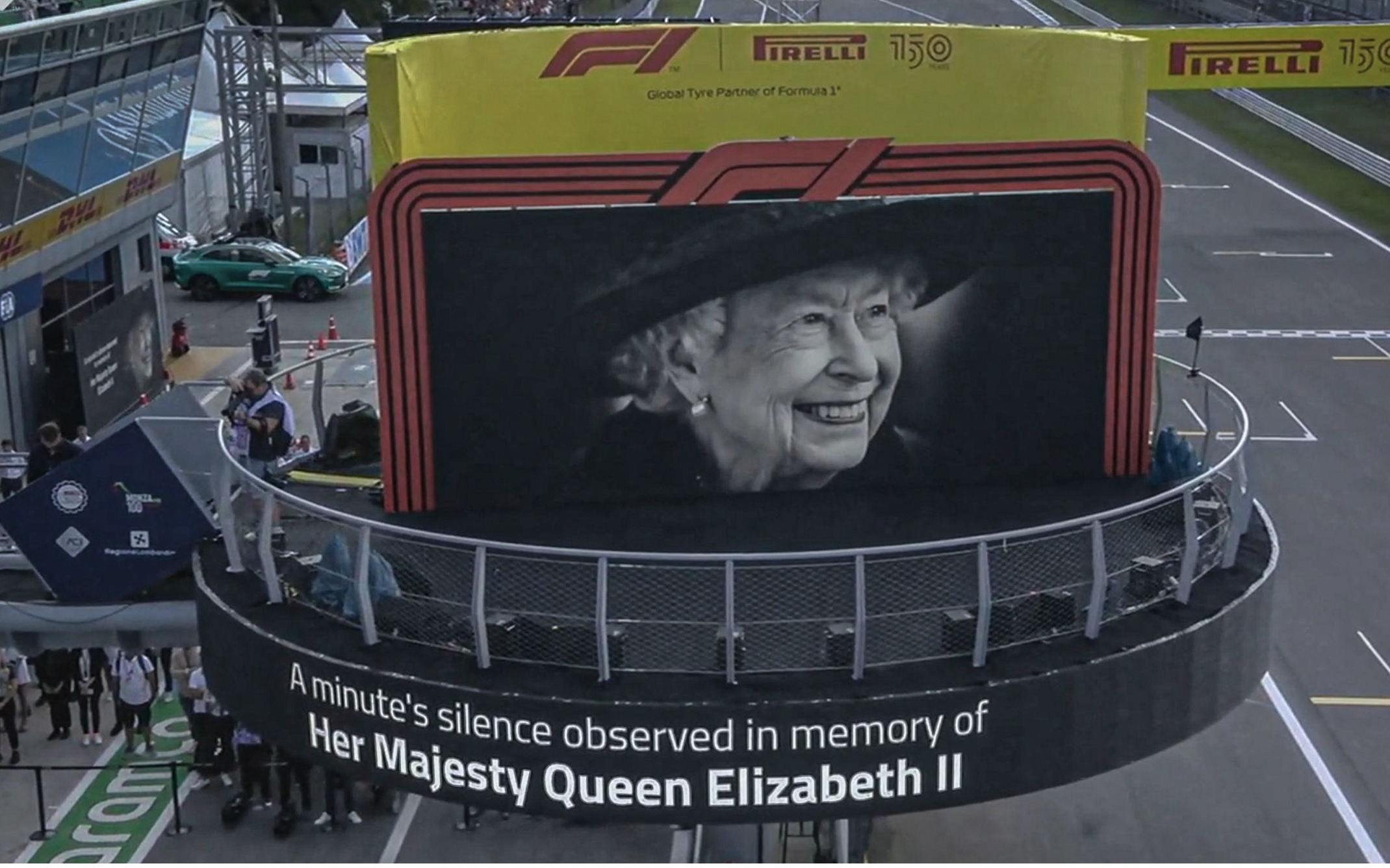
Books of condolences will be placed in churches and royal residences throughout the country, and local councils are expected to organise their own forms of memorials.
On a far larger scale, Royal Mail will now stop issuing stamps with the queen’s portrait until new ones can be issued with the portrait of the king. The same will occur for British currency, passports, mailboxes, and any products that carry a royal warrant.
King Charles III
At the age of seventy-three years old, Charles has been the longest-serving heir in British history and is now the oldest person to have ever assumed the British throne. The queen dying when she did at least allowed him some time to grieve privately before the conventions of monarchy demand his attention. As I’m writing this, Charles is making his way to Buckingham Palace from RAF Northolt in the monarch’s car, with the royal standard flying above it, indicating that the sovereign is present.
The monarchy, as an institution, is continuous. At the moment of the queen’s death, Charles became King Charles III. There was some talk that he might take a different regnal name; the monarch isn’t obliged to rule under their own name and previously Charles had said that his name hadn’t been entirely a lucky one for kings. King Charles I was beheaded for treason by his own people and his son, Charles II, oversaw the great plague and the great fire of London. Despite leaving his first statement regarding the death of his mother unsigned, the Prime Minister referred to him as King Charles III in her own statement, and Clarence House confirmed the name shortly afterwards.
On the first day of mourning, he will return to Buckingham Palace where he will make his first address to the nation. He will also meet the Prime Minister, a first for both of them, and will no doubt be inundated with meetings and discussions as to what comes next. These discussions will be headed by the current Duke of Norfolk, the Earl Marshall, who is responsible for the arrangement of the queen’s funeral and heads up the organisational committees related to it.
Among all of this, it’s expected that Charles will take a moment to walk among the flowers and tributes left to his mother outside of Buckingham Palace before they are inevitably moved to nearby parks so that the palace guard can continue their work unimpeded. There will then be the first of many memorial services for him to attend, starting with St. Paul’s Cathedral.
On the second day, King Charles will meet with senior government officials who will swear an oath to serve him. He will also go to St James Palace where he will meet with the Privy Council, or because of its size, a deputation of the Privy Council and be proclaimed King. This is an entirely ceremonial event rather than a legal requirement, and in the hour following this flags will fly as normal before being returned to half-mast. He will then undertake a tour of the four corners of the United Kingdom; England, Scotland, Wales, and Northern Ireland, before returning to London in time for the funeral.
The funeral of the queen will not necessarily precede a coronation and plans for the latter likely won’t be considered until after the proverbial dust has settled. As an aside, in these interim weeks, while Charles automatically becomes King, his previous title of Prince of Wales doesn’t immediately pass to his son William. William will have to be invested, as Charles was, by the monarch. William does, however, immediately inherit the title Duke of Cornwall, and is now known as Prince William, the Duke of Cornwall and Cambridge.
The Queen
As for the queen, there are still conventions to be observed even in death. In the first few days of mourning, her coffin will be moved to Holyrood House, the official residence of the British monarch in Scotland. There will then be a procession to St Giles’ Cathedral where she will lie in rest for twenty-four hours allowing the public to view the coffin and pay their respects.
She will then be moved from Scotland to London. After a brief stay at Buckingham Palace, she will be taken in a procession to Westminster where she will lie in state for the four days prior to her funeral. As at Scotland, the public will be allowed to view the coffin which will be guarded by four soldiers of the Royal Household, draped with the royal standard, and decorated with the Imperial State Crown and the Sovereign’s orb and sceptre.
On the day of the funeral, as of yet unconfirmed but likely a public holiday seeing schools and businesses closed, she will be taken by gun carriage from Westminster Hall to Westminster Abbey. After the funeral, there will be a procession before the queen is taken by hearse to Windsor Castle.
The queen’s family will then rejoin the procession as the queen enters St. George’s Chapel and there will be a committal ceremony as her coffin is interred in the King George VI memorial chapel where she will rest beside her father, mother, and of course, her beloved husband, the late Prince Philip.
This is our country’s saddest day because she had a unique and simple power to make us happy. This is why we loved her. That is why we grieve for Elizabeth the Great, the longest serving and in many ways the finest monarch in our history.
It was one of her best achievements that she not only modernised the constitutional monarchy, but produced an heir to her throne who will amply do justice to her legacy, and whose own sense of duty is in the best traditions of his mother and his country.
Though our voices may still be choked with sadness we can say with confidence the words not heard in this country for more than seven decades.
Statement on the death of Her Majesty Queen Elizabeth II – Boris Johnson
God Save The King.
If you’d like to join me for more fun and games in picking apart history, and other behind the scene tangents, you can support me via my Patreon.

